Results 10,541 to 10,550 of 12091
Thread: Anandtech News
-
04-30-20, 05:04 PM #10541
Anandtech: Sponsored Post: Here Are All of the Z490 Motherboards Announced During Gig
During its AORUS Direct event on April 30, Gigabyte announced a brand new line of motherboards: the Z490 series. These boards have been designed with Intel’s new elite 10th Gen desktop processors in mind, and come with a new chipset called Intel Z490 alongside a slew of impressive features and traits. Here’s a detailed overview of everything you need to know about these new motherboards, including a breakdown of the exciting technology in them and specific details about each model.
What’s New With Z490?
The Z490 motherboard lineup introduces plenty of new and exciting features that have never been seen on traditional desktop motherboards before. The most significant of these is a new power structure known as Extreme Power Design. This structure makes use of 90A power stages, an Intersil PWM controller, and 16 phases in its voltage regulator module (VRM). All of these powerful pieces of kit allow Z490 motherboards equipped with the Extreme Power Design to provide a whopping 1440A of power to your rig’s CPU, which is unprecedented in the desktop realm. With this kind of power, you can push your processor to its limits and then some without fear of power issues. Additionally, the advanced tantalum polymer capacitors that some of the motherboards use reduce the risk of voltage spikes by 22%, ensuring that the entire system remains stable throughout your gameplay experience.
Also new is Gigabyte’s XTREME MEMORY design that combines a dual in-line memory module (DIMM) system with shielded memory routing and more tantalum polymer capacitors. This structure makes it possible for Z490 motherboards to support RAM speeds of 4800 MHz and beyond, which is something that overclocking enthusiasts will no doubt love to hear.
In order to solve the issue of heat, Gigabyte has also made significant improvements to its cooling systems. Its Direct Touch Heatpipe system has been enlarged by 33% and given a narrower gap between the area where pipe and the motherboard’s aluminum heatsink meet. On top of this, the Fins Array cooling system has also been upgraded to a louvered design. These narrow channels allow more air to make contact with the motherboard’s heatsink, thus reducing heat buildup. Finally, many areas of the motherboards have been given a special NanoCarbon coating and a baseplate of this material has been added to the design as well. This material is better at dissipating heat than regular materials, and as a result, the addition of NanoCarbon to Z490 motherboards improves cooling by 10%. All of these different cooling systems combined reduce temperatures by up to 32 degrees Celsius compared to a motherboard with none of them.
In terms of aesthetics, Gigabyte has focused on giving each and every Z490 motherboard a striking, angular appearance as part of its initiative to create its “AORUS Universe” where each product looks like something straight out of a futuristic movie or video game. The use of high-quality metals for these motherboards accompanies this style very nicely, and also improves the physical durability of the motherboards as well.
As a result of all these awesome new features, the motherboards found within the Z490 lineup are capable of supporting every single CPU core clocking in at a stellar 5.3 GHz. For gamers, this will mean an increase to your framerate, and content creators will be able to significantly reduce render times so that they can get more work done.
The Full Z490 Motherboard Lineup
The majority of the new Z490 motherboards are of the AORUS variety, which are designed to be suited for gamers. The first — and most powerful — among these boards is the Z490 AORUS XTREME, which Gigabyte is calling its flagship motherboard. It’s outfitted with all of the advanced features and technologies listed in this article, as well as top-grade Hi-Fi equipment, support for Intel 2.5Gb ethernet and Wi-Fi 6, triple NVMe SSD slots, PCIe 4.0, and even Thunderbolt 3. Due to its elite quality, it will be the priciest motherboard at $799.99.
The next board in the lineup is the Z490 AORUS MASTER, which is a more affordable, high-end alternative to the Z490 AORUS XTREME. It lacks some of the advanced audio equipment that the XTREME has, doesn’t support Thunderbolt 3, and doesn’t have NanoCarbon on the Fins Array system. On top of this, it also has 14 phases in its Extreme Power Design instead of 16. However, it’s also priced much lower at $389.99, which will likely make it the overall favorite option for high-end PC owners.
Next up is the Z490 AORUS ULTRA. This motherboard is the mid-range pick in the lineup, as it uses a more traditional power structure instead of the Extreme Power Design and comes with 12 phases. In addition, it doesn’t have Hi-Fi audio features. Aside from this, though, it’s pretty much identical to the Z490 AORUS MASTER, and it even comes with NanoCarbon on the Fins Array that the MASTER lacks. It’s priced at $299.99, which strikes a nice balance between quality and cost.
Following the ULTRA is the Z490 AORUS PRO AX, which is the budget motherboard of the lineup. Compared to the ULTRA, it doesn’t come with any of the new cooling system improvements, and it doesn’t come with any tantalum polymer capacitors in its 12-phase power design either. Additionally, it only has two NVMe SSD slots. It does come with everything else that you can find in the ULTRA, however, and it’s priced lower at $269.99.
Don’t worry if you’re a fan of smaller PC builds, as Gigabyte has you covered with the next motherboard in the lineup, the Z490I AORUS ULTRA. This motherboard only comes with 8 phases, but it does use the advanced Extreme Power Design found in the Z490 AORUS XTREME and MASTER. That means that it comes with the 90A power stage as well as tantalum polymer capacitors. It doesn’t come with the cooling system upgrades or NanoCarbon plating, but considering how small of a form factor this motherboard has, that’s completely fine. It will retail for $269.99.
While most of the Z490 motherboards are meant for gaming, there are a couple that are geared towards content creators as well. These variants of the Z490, which are part of the VISION series, come with some unique features not found in the AORUS series. The first of these is the Z490 VISION D, which is the more powerful of the two VISION boards. It comes with similar Hi-Fi audio gear to that found in the Z490 AORUS XTREME, and an Extreme Power Design with 12 phases. Additionally, it comes with Thunderbolt 3 support, support for 32GB single DIMM memory, four total DIMMs instead of two, and it can even support two GPUs. It also comes with upgradeable M.2 expansion slots so that you’ll never run out of storage. It doesn’t come with the upgraded cooling that many of the AORUS motherboards have, but it does come with all of the same connectivity features like support for 2.5Gb ethernet and Wi-Fi 6. It’s priced at $299.99.
The other VISION motherboard is the Z490 VISION G. In many ways it is identical to the Z490 VISION G. However it does not have Hi-Fi audio equipment and also doesn’t support Thunderbolt 3. Instead, it uses USB 3.2 Gen 2 Type-C. The trade-off, though, is a lower price. The Z490 VISION G is less costly than the D variant, coming in at $199.99.
Lastly, there will also be two specialty motherboards available: the Z490 AORUS XTREME WATERFORCE and the Z490 AORUS ULTRA G2 Edition. The former is a variant of the XTREME motherboard that incorporates water cooling, while the latter is a version of the ULTRA that features a unique design inspired by Gigabyte’s partners at G2 Esports. Information about both of these motherboards can be found on Gigabyte’s website.
Gigabyte Motherboards Have Never Been Better
The Z490 lineup of motherboards represents the best of Gigabyte, and if you’re a PC user, things have never been as exciting as they are right now. Whether you’re an enthusiast who wants to have the best of the best, a casual PC gamer that wants something effective and affordable or a content creator who’s looking to take the entertainment world by storm, there’s a Z490 motherboard that will be perfect for you.
More...
-
05-04-20, 11:16 AM #10542
Anandtech: Apple Launches New 13" MacBook Pro: 10th Gen Ice Lake and New Scissor Keyb
Today Apple is releasing new revamped versions of its 13” MacBook Pro line-up, most notably updating the series with the new scissor-switch style Magic Keyboard, as well as giving the option for Intel’s new 10th generation Ice Lake CPUs in the higher end models.
Apple last winter had rolled out its new 16” MacBook Pro which had introduced the new Magic Keyboard, making the choice to drop the controversial butterfly switch keyboard back to a scissor switch design. Today’s 13” line-up adopts the same changes across the smaller form factor models, including the new Touch Bar design that has been narrowed down to now include a physical escape key on the keyboard.
The new design otherwise doesn’t significantly diverge from its summer-2019 refresh, although this year it’s every so slightly thicker at 1.56cm instead of 1.49cm – certainly unnoticeable in everyday usage. It’s also 30g heavier at up to 1.4kg now (3.1lbs).
The most significantly internal change is the option for a new 10th generation Intel Ice Lake based CPU, running at 2.0GHz base clocks and Turbo Boost to up to 3.8GHz. As always with Apple products, this likely is a custom SKU just for Apple’s line-up as there’s no matching public part with these frequencies – the closest part is an i7-1060G7 which features the same peak clock, but only a meagre 1.0GHz base clock. Apple here likely is running a higher base TDP of 20-25W. For a $200 upsell, you can choose a higher-end 2.3/4.1GHz CPU configuration.
Whilst the Ice Lake based parts are new, Apple will continue to sell 8th generation Coffee Lake based parts at the lower end price spectrum in the $1299 and $1499 price points. Aside from the CPUs themselves, the two generational offerings of CPUs will also differ in their DRAM configuration as the new ICL parts come with 16GB of LPDDR4X-3733, whilst the CFL parts continue to just offer 8GB of LPDDR3-2133. The ICL parts are upgradeable to 32GB for an extra $400, and the CFL parts upgrade to 16GB for $100.
The display panel seemingly remains unchanged, featuring a 13” 2560 x 1600 IPS LCD panel with a wide Display P3 colour gamut, 500 nits peak brightness, and True Tone ambient colour adjustment.
Connectivity-wise, the new 2020 13” MacBook Pros come in two favours: the lower-end $1299 and $1499 Coffee Lake based models feature two Thunderbolt 3 ports, whilst the Ice Lake based parts get four. We also see an addition of a 3.5mm headphone jack. Unfortunately, Apple seemingly hasn’t upgraded the Wi-Fi on the new models, and WiFi 6 / 802.11ax still isn’t present as they still make due with WiFi 5 / 802.11ac capability.MacBook Pro 13-Inch 2020 Model 2020 13-Inch
Higher-End2019 13-Inch
Higher-End2018 13-Inch
Entry-LevelCPU 2.0 GHz/3.8 GHz
Core i5-10???
4 CPU Cores
(Ice Lake)2.4 GHz/4.1 GHz
Core i5-8???U
4 CPU Cores
(Coffee Lake)1.4 GHz/3.9 GHz
Core i5-8???U
4 CPU Cores
(Coffee Lake)GPU Intel Iris Plus Intel Iris Plus 655
(128MB eDRAM)Intel Iris Plus 645
(? eDRAM)Display 13" 2560 x 1600 IPS LCD
DCI-P3 Gamut
True ToneMemory 16 GB LPDDR4X-3733 8 GB LPDDR3-2133 SSD 512 GB PCIe SSD 256 GB PCIe SSD 128 GB PCIe SSD Touch Bar Yes I/O 4x Thunderbolt 3 (supports DP1.2 & USB 3.1 Gen 2 modes),
3.5mm Audio2x Thunderbolt 3 (supports DP1.2 & USB 3.1 Gen 2 modes),
3.5mm AudioBattery Capacity 58 Wh 58.2 Wh Battery Life 10 Hours Dimensions 1.56 cm x 30.41 cm x 21.24 cm 1.49 cm x 30.41 cm x 21.24 cm Weight 3.1 lbs (1.4 kg) 3.02 lbs (1.37 kg) Launch Price $1799 $1799 $1299
Battery-wise, there’s no changes in capacity as we’re still looking at a 58Wh unit, and Apple claims an identical “10 hours” of usage for all new models – the same as last year’s Coffee Lake models.
The higher-end Ice Lake parts come now with the aforementioned base 16GB of DRAM config at a $1799 price point with a 512GB SSD, or a $1999 option with a 1TB SSD. Storage configurations for the ICL models are doubled across the board, with the possibility to choose up to a 4TB configuration for an extra $1200.
The new 13" MacBook lineup is available for order directly from Apple starting today.
Related Reading:- Apple Reveals MacBook Air 2020: 10th Gen Intel Quad-Core and Scissor Keyboard, Starting At $999
- Apple Rolls Out 16-Inch MacBook Pro: A Bit Bigger, A Bit More Refined
- Apple’s Entry-Level 13-Inch MacBook Pro Gets Quad-Core CPU & Touch Bar
- Apple’s MacBook Air Gets True Tone Display, Lower Price Tag
More...
-
05-05-20, 07:48 AM #10543
Anandtech: The Acer Swift 3 SF314 Notebook Review: Swift Gets Swifter With Ryzen 4000
Almost two years ago to the day, we had a chance to check out Acer’s Swift 3 laptop featuring AMD's first Ryzen Mobile platform, Raven Ridge. Acer has been a strong partner for AMD, generally being one of the first out of the gate with new designs featuring AMD’s latest platforms, and this year that partnership has played out again. Today we are taking a look at the newest AMD APU offering, the Ryzen 4000 "Renoir", which is at the heart of Acer’s latest iteration of the 14-inch Swift 3. With a brand-new AMD processor and some innovations in the Swift 3 design itself, both AMD and Acer have made some tremendous improvements for 2020.
More...
-
05-05-20, 09:15 AM #10544
Anandtech: The ASRock Rack Z490D4U-2L2T, Micro-ATX Server For LGA1200
Off the back of the announcement of a substantial amount of Z490 motherboards designed for Intel's 10th generation desktop processors, ASRock Rack has announced a server-focused model. The ASRock Rack Z490D4U-2L2T offers an impressive array of Ethernet including two Intel 10 GBE and two Intel Gigabit Ethernet ports; all on a micro-ATX form factor PCB.
With over 44+ Z490 models to choose from a variety of vendors, ASRock Rack has announced its intention to release a server solution for LGA1200. Although ASRock Rack hasn't officially revealed a complete list of specifications for its Z490D4U-2L2T micro-ATX motherboard, ASRock Rack has made some information public.
Potentially suited for cloud gaming servers and high-frequency trading, the ASRock Rack Z490D4U-2L2T includes IPMI remote management. It is equipped with an Intel X710-AT2 10 G Ethernet controller which adds two 10 GbE ports onto the rear panel, as well as two Intel Gigabit Ethernet controllers bringing the board's Ethernet capacity up to four. For the storage is two PCIe 3.0 x4 M.2 slots which include support for Intel Optane memory, and has six SATA ports with RAID 0, 1, 5 and 10 array support. There is also an HDMI video output on the rear panel for use with Intel's UHD integrated graphics.
It's an interesting micro-ATX offering and adds an extra dimension to Intel's latest Z490 chipset. This will likely support Intel's Xeon range of 10th generation processors, but we can't confirm that at this time.
ASRock Rack hasn't unveiled full specifications for the Z490D4U-2L2T, nor has it revealed when it's expected to launch or at what price it will release.
Related Reading- The Intel Z490 Overview: 44+ Motherboards Examined
- Intel's 10th Gen Comet Lake for Desktops: Skylake-S Hits 10 Cores and 5.3 GHz
- Best CPUs for Workstations: May 2020
- Best Motherboards: Q1 2020
- Best CPUs for Gaming: April/May 2020
More...
-
05-05-20, 11:18 AM #10545
Anandtech: First ATX12VO Consumer Motherboard: The ASRock Z490 Phantom Gaming 4SR
A blog post from Intel has showcased the first consumer motherboard with the ATX12VO power standard from ASRock, and we reached out to ASRock for more details. They have now put up a product page for this board, the ASRock Z490 Phantom Gaming 4SR.
More...
-
05-05-20, 02:51 PM #10546
Anandtech: The ASRock Z490 Aqua: Thunderbolt 3, PCIe 4.0 Ready, Water Cooled
Following a resurgence of motherboards decked out with custom monoblocks, ASRock has announced details on its Z490 Aqua. It includes a familiar aluminium plated copper custom monoblock, with just 999 units available for purchase. It includes two Thunderbolt 3 Type-C ports, three PCIe 3.0 x4 M.2 slots, an Aquantia 10 G and Realtek 2.5 G Ethernet controller pairing, including hardline water cooling fittings within the accessories bundle.
During Computex 19, ASRock unveiled its X570 Aqua motherboard which we since reviewed, which is currently one of the most stunning desktop models in existence. The new ASRock Z490 Aqua builds upon the success of its AMD based model, with a full cover block monoblock which cools the CPU and the 16-phase power delivery. Following the same design as the X570 model, the ASRock Z490 Aqua adds an OLED display which can display with CPU voltages, temperatures, system and POST statuses, with an abundance of premium controllers and features onboard.
Included in the long list of features are three full-length PCIe 3.0 slots which run at x16, x8/x8, and x8/x8/+4, with two PCIe 3.0 x1 slots. It uses a 16-phase power delivery which is kept cool by the large monoblock, and benefits from 90 A power stages with a maximum Vcore current of up to 1260A. Providing power to the CPU is a pair of 8-pin 12V ATX CPU power inputs, with an Intersil ISL69269 PWM controller operating in a 14+2 configuration. There is support for DDR4-4700, with a total capacity of up to 128 GB across four memory slots. It does have support for ECC DDR4 UDIMMs, but these will operate in non-ECC mode.
New for the Z490 Aqua is a pack of hardline water cooling fittings which come in the board's accessories bundle. This includes six knurled silver straight fittings, four 90° right-angled fittings, with a filling and drawing value, and two stop-cap fittings with the Aqua logo, all packed into a nice presentation box.
The rear panel of the ASRock Z490 Aqua is stacked with two Thunderbolt 3 Type-C and two accompanying Mini DisplayPort input ports. Also present are three USB 3.2 G2 10 Gbps Type-A, one USB 3.2 G2 10 Gbps Type-C, and four USB 3.2 G1 Type-A ports. For users intending to leverage Intel's integrated graphics, there is a single HDMI video input. For users demanding premium networking, the Z490 Aqua is using an Aquantia AQC107 10 G and Realtek RTL8125BG 2.5 Ethernet controller pairing, as well as an Intel Wi-Fi 6 wireless interface which provides support for BT 5.0 devices. There are five 3.5 mm color-coded audio jacks and S/PDIF optical output which are powered by a Realtek ALC1220 HD audio codec, which is assisted by an ESS Sabre 9128 DAC which controls the front panel audio. Finishing off the rear panel is a clear CMOS switch and a BIOS Flashback button.
The ASRock Z490 Aqua is expected to weigh a considerable amount when all the aluminium, the backplate, and custom monoblock is factored in; the ASRock X570 Aqua for reference weighed a whopping 2.5 kg (~5.5 lbs). Only 999 units will be available for purchase which will add an element of exclusivity, which we expect to add to the price tag.
ASRock hasn't unveiled pricing at this time, but we expect the Z490 Aqua to be available either at the launch of Intel's 10th Generation Comet Lake processors or shortly after.
Related Reading- The Intel Z490 Overview: 44+ Motherboards Examined
- Intel's 10th Gen Comet Lake for Desktops: Skylake-S Hits 10 Cores and 5.3 GHz
- The ASRock X570 Aqua: A $1000 Ryzen Halo Motherboard Reviewed
- Best Motherboards: Q1 2020
- Best CPUs for Gaming: April/May 2020
More...
-
05-05-20, 02:51 PM #10547
Anandtech: 120Hz On The OnePlus 8 Pro: QHD+ Resolution But Still Power Hungry
High refresh rate displays in smartphones are all the rage in 2020, but the new exciting feature is still in its infancy in terms of hardware implementations. Currently there’s still a lot of caveats when using the higher refresh rate, particularly a large impact on the battery life of the phone.
A few weeks ago we covered the characteristic in Samsung’s Galaxy S20 series, noting how it results in a quite large bump in the power consumption of the device, even when seemingly not actually displaying any dynamic content on-screen.
The new OnePlus 8 Pro is another 120Hz flagship device that’s been recently released, and we finally managed to get our hands on a sample. Curiosity got the best of me and the power consumption of the phone at different refresh rates was amongst the first things I tested, particularly because the phone offers the 120Hz refresh rate at a native QHD+ software rendering resolution – something Samsung’s Galaxy S20 series can’t do.
Observing the input power of the phone for a more graphical representation of the different modes, we immediately see that OnePlus’ 120Hz mode incurs a similar power jump to that of the Galaxy S20. The figures here aren’t quite correct as the phone’s power usage when connected to USB is unusually high so don’t pay too much attention to those numbers – just at the differences between the modes.
We can also see that there’s extremely little difference in the base power consumption of the phone between the FHD and QHD modes, both at 60Hz and 120Hz refresh rates. This is actually an important indicator as to narrow down whether the power draw comes from the SoC, or the display panel or DDICs.
Re-measuring the power in a more correct manner, the OnePlus 8 Pro falls in line with other phones of this generation, both at 60 and 120Hz.
We had expected the OnePlus 8 Pro to fare off worse than the Galaxy S20 series, and yes it does draw slightly more power – but not as much as I had initially thought it would. The hardware differences between the phones here relates to their display interfaces, the Galaxy S20 series features a single MIPI lane to the DDIC, a bottleneck that is the reason for why the phone can’t do QHD at 120Hz. The OnePlus 8 Pro on the other hand does feature dual MIPI interfaces to the display panel and thus has the bandwidth necessary for driving the higher refresh rate at the highest resolution.
The fact that the differences between the two phones is only a mere 20-25mW means that the display interfaces have very little to do with the increased power draw. The difference in the base power consumption between FHD and QHD modes is a mere 10mW, so seemingly that also has very little impact on power other than the additional power to actually render higher resolution dynamic content.
It seems that the power consumption here solely is to blame on the DDIC and the display panel itself, both having to work harder to drive the pixel matrix at higher frequencies. It’s a somewhat discouraging confirmation as it means the ecosystem is in dire need for true VRR (variable refresh rate), where the panel doesn’t need to be driven like this during static content.
We’ll be reviewing the OnePlus 8 Pro in more details in a full review in the coming weeks – today’s quick pipeline was just meant to address this burning matter of the 120Hz implementation of the phone. Generally, I expect the 120Hz mode here to have a slightly higher battery impact than what we saw on the S20 series, but nothing to drastically worse.
Related Reading:- OnePlus Announces OnePlus 8 & OnePlus 8 Pro: Step-Up 2020 Flagships
- The Samsung Galaxy S20+, S20 Ultra Exynos & Snapdragon Review: Megalomania Devices
- Samsung Galaxy S20+ & Ultra (Snapdragon & Exynos) Battery Life Preview
More...
-
05-05-20, 04:26 PM #10548
Anandtech: GeiL Unveils 64 GB DDR4-3200 SO-DIMM Kit, 2 x 32 GB
Memory manufacturer Golden Emporer International Limited, or known generally as GeiL, has announced its new memory line with support for Intel 10th Gen and AMD Ryzen 4000 series processors. Casually calling its new 64 GB product simply 'SO-DIMM', it will be available in a 2 x 32 GB DDR4-3200 kit.
With mobile processor architecture improving at a steady rate, memory capacity limits have increased designed to give gamers and content creators more robust memory capabilities. Designed to support Intel's 10th generation and AMD's Ryzen 4000 mobile series, the GeiL SO-DIMM offers users to upgrade its notebooks with 64 GB of memory. Not only DDR4-3200, but the GeiL SO-DIMM series also includes DDR4-2666 and DDR4-2933 variants.
With its black and simplistic design, the DDR4-3200 64 GB (2 x 32) kit has a CAS latencies of 22-22-22-52. GeiL states every kit is tested with its DYNA 4 SLT technology but doesn't state publically what that entails. The DDR4-2666 kit has latencies of 19-19-19-43, while the DDR4-2933 has latencies of 21-21-21-48 (these sub-timings are similar to other vendors). Every 2 x 32 GB kit has an operating voltage of 1.2 V and is also backed by GeiL's limited lifetime warranty.
While the product naming scheming is somewhat unimaginative, the SO-DIMM range of dual-channel 64 GB kits for mobile platforms is GeiL's first 64 GB SO-DIMM kit. Geil hasn't announced when the SO-DIMM 64 kits will be available, nor has it revealed pricing at this time.
Related Reading- SK Hynix: We're Planning for DDR5-8400 at 1.1 Volts
- TeamGroup Announces 32GB T-Force Vulcan Z and Dark Z DDR4 Modules
- G.Skill Launches 256 GB DDR4-3600 CL16 Memory Kit
- GIGABYTE Launches Designare DDR4-3200 Memory, a 64 GB Kit
- The Corsair DDR4-5000 Vengeance LPX Review: Super-Binned, Super Exclusive
More...
-
05-06-20, 10:31 AM #10549
Anandtech: Microsoft Springs A Surface Refresh: Surface Book 3 And Surface Go 2 Plus
This morning Microsoft is announcing a refresh on a couple more of their Surface products that did not get updated back in October. The Surface Book 3 and Surface Go 2 will be making their way onto the shelves of the Microsoft Store this month, with the updated Surface Go 2 available May 12 along with the new accessories, and the Surface Book 3 coming on May 21.
Surface Go 2
The smallest member of the Surface family is getting some nice updates. Microsoft has shrunk the bezels slightly and were able to fit in a 10.5-inch display in the same size device as the original generation. The new 10.5-inch PixelSense display also gets a slight resolution bump to compensate, coming in at 1920x1280, keeping the 3:2 aspect ratio Surface is known for, and achieving 220 pixels per inch.
One of the biggest knocks against the first generation was its lackluster performance, and Microsoft is now offering two new processor options. The first generation shipped with an Intel Pentium 4415Y, based on the Amber Lake platform. On the base model, there is a slight boost, since it will now move to the Intel Pentium 4425Y, boosting the frequency from 1.6 GHz to 1.7 GHz. For those that want a bit more speed, Microsoft is also offering a model with the Intel m3-8100Y, also based on Amber Lake, but the key difference being that the Core lineup offers Turbo, and the Pentium lineup does not. The Core m3-8100Y boosts to 3.4 GHz at its default TDP of 5 Watts, and should make a substantial difference for light workloads.Microsoft Surface Go 2 Surface Go Specifications CPU Intel Pentium Gold 4425Y (Amber Lake-Y)
2 core, 4 thread, 1.7 GHz base frequency 6W TDP
Optional Core m3-8100Y (Amber Lake-Y)
2 core, 4 thread, 1.1-3.4 GHz, 5W TDPGPU Intel HD 615
24 EUs 850 MHz (900 Core m3) boost frequencyDisplay 10.5-inch PixelSense
1920x1280 3:2 aspect
220 Pixels Per Inch
10-point Multitouch
Surface Pen supportDimensions 245 x 175 x 8.3 mm
9.6 x 6.9 x 0.33 inchesWeight 544 grams (WiFi) / 553 grams (LTE)
1.20 lbs (WiFi) / 1.22 lbs (LTE)RAM 4 or 8 GB LPDDR3-1866 Storage 64 GB eMMC
128 NVMe SSD optional
256 GB NVMe SSD (Commerical Option)Wireless 802.11ac with Bluetooth 4.1
Qualcomm Snapdragon X16 LTE OptionalBattery Up to 10 hours
24W ChargerCameras Windows Hello IR camera
5 MP Front Camera with 1080p video
8 MP Rear Camera with 1080p videoPorts USB Type-C 3.1 Gen 1 with power delivery
Surface Connect
MicroSD
HeadsetPrice Starting at $399 USD
Otherwise the hardware has not changed much. Microsoft has added dual-studio microphones, which pair well with the 5 MP front camera for video conferencing, which has become much more important in today’s climate. They’ve also added a new camera application for the rear 8 MP camera to make it easy to scan documents and whiteboards. One has to assume the app is based on their Office Lens software, which works very well for these tasks. The base unit still features 64 GB of eMMC storage, and you can opt for a 128 GB SSD model as well. It would have been nice to see both of those values doubled for this year, even if it meant the devices cost slightly higher.
The 10.5-inch convertible tablet of course works with the Surface Pen as well, and Microsoft has new colors for the Type Cover accessory for this season, with Platinum, Black, Poppy Red, and Ice Blue options this year.
The original Surface Go was a well-built machine, and the new version starts at the same base price of $399. Prices will go up from there, and Microsoft is continuing to offer the LTE version as well.
Surface Book 3
The Surface Book 2 is still today one of the nicest laptops available, and today’s refresh does not mess with what worked. Microsoft has kept the same design from the Surface Book 2, with both the 13.5-inch and 15-inch models getting new components inside. This may be disappointing to some who crave some new wow factors, but the Surface Book 2 was a fantastic device, and Microsoft has chosen not to mess with success.
The big changes this year are all under the hood. The Surface Book lineup now features Intel’s Ice Lake processors, with the Core i5-1035G7 as the base option on the smaller 13.5-inch model, and the Core i7-1065G7 as an option on the 13.5, and standard on the 15-inch Surface Book 3. RAM options now allow for up to 32 GB, thanks to Ice Lake’s use of LPDDR4X. Microsoft has paired the new processors with new GPUs as well. The smaller device bumps the GPU from the NVIDIA GTX 1050 in the previous gen to a NVIDIA GTX 1650 Max-Q with 4 GB of GDDR5 for 2020. The larger Surface Book 3 gets a new NVIDIA GeForce GTX 1660 Ti Max-Q. For those that need Quadro, Microsoft is also offering the Quadro RTX 3000, which is actually a pretty big jump in GPU size compared to the GTX 1660Ti, going from 1536 CUDA cores up to 2304 on the RTX Quadro 3000. There may be some questions as to why Microsoft opted for a GTX 1660 Ti when the RTX 2060 Max-Q is available, but the RTX model is quite a bit more power hungry in most scenarios.Microsoft Surface Book 3 13.5 No GPU 13.5 GPU 15 CPU Intel Core i5-1035G7
Quad-Core w/Hyperthreading
1.2-3.7 GHz 6MB Cache 15W TDPIntel Core i7-1065G7
Quad-Core w/Hyperthreading
1.3-3.9 GHz 8MB Cache 15W TDPRAM Up to 32GB LPDDR4X GPU Intel Iris Plus G7 Intel Iris Plus G7 + NVIDIA GTX 1650 Max-Q 4GB Intel Iris Plus G7 + NVIDIA GTX 1660Ti Max-Q 6GB Storage fastest SSD we have ever shipped Display 13.5" PixelSense
3000x2000 3:2 sRGB
Touch and Pen enabled15" PixelSense
3240x2160 3:2 sRGB
Touch and Pen enabledNetworking Wi-Fi 6 802.11ax
Bluetooth 5.0Audio Stereo Speakers (front facing)
Dolby Audio PremiumBattery Up to 15.5 Hours Up to 17.5 Hours Xbox Wireless No Yes Right Side Surface Connect
USB Type-C 3.1 Gen 1 with USB Power Delivery
Headset JackLeft Side 2 x USB 3.0 Type-ASD Card Reader Dimensions 312 x 232 x 13-23mm
12.3 x 9.14 x 0.51-0.90 inches343 x 251 x 15-23 mm
13.5 x 9.87 x 0.57-0.90 inchesWeight 1.53 kg
3.38 lbs1.64 kg
3.62 lbs1.90 kg
4.2 lbsCameras 8.0 MP Rear-facing camera with autofocus
5.0 MP front-facing camera with 1080p video
Windows Hello IR cameraPricing Starting at $1599 USD
For 2020, Microsoft has also re-engineered their Surface Connect adapter, and the new Surface Book 3 should no longer drain the battery under high-load scenarios. The new model ships with a 127-Watt charger on the 15-inch model, and a 102-Watt charger on the GPU-equipped 13.5-inch version. The maximum power the original Surface Connect could handle was 100 Watts, so this small amount of extra capacity should do the trick.
Microsoft still is not interested in Thunderbolt 3, but the Surface Book 3 features the same USB-C 3.2 Gen 2 port as the previous model, including USB Power Delivery revision 3.0. The new Surface Book 3 will be available May 21 starting at $1599.
Accessories
Surface Headphones 2
Microsoft launched the Surface Headphones back in 2018, and for 2020 they’ve updated them to the Surface Headphones 2. The new models feature the same noise-canceling features, with 13-levels of active noise cancelation, which can be adjusted with on-ear dials. Microsoft has improved the sound quality and battery life for this generation, and the new headphones now feature up to 20 hours of battery life, with a charge time of only two hours. There are also new ear cups which can be rotated 180° for comfort, and the Surface Headphones 2 now come in black, as well as the original platinum, to match the finish on the Surface lineup. The new headphones start at $249, and will be available May 12.
Surface Earbuds
Maybe headphones are not your thing. Microsoft is now offering Surface Earbuds, featuring touch-controls for dialing and changing songs. They can auto-start Spotify by triple-tapping either earbud. They come with a wireless charging case, and offer “all-day” battery life. The Surface Earbuds will be available May 12 for $199.
Surface Dock 2
Microsoft has updated their Surface Dock with faster charging, higher data rates, and enterprise management, which was a feature that was likely very highly requested by Microsoft’s enterprise customers. They will also be offering a new USB-C Travel Hub to connect to multiple devices when you are on the go.
Source: Microsoft
More...
-
05-06-20, 10:31 AM #10550
Anandtech: MAINGEAR Pro WS: Pre-Configured Systems for Creatives, Up to 64 cores and
System integrators are there to offer users who don’t want to build their own system a way of getting a machine they can use for work or play. One of the benefits of using a system integrator to build your new system, and ultimately the additional cost of using this service, usually comes down to additional validation, checks, and the promise of a refined system from engineers that can build them in their sleep. One of the biggest markets in recent quarters is the creator market, and demand for workstations to help accelerate creative workflows is supposedly rising – on the back of this, MAINGEAR is launching its new configurable Pro WS range of workstations, complete with optimized builds for popular creative hardware.
4K/8K content creation, either on video, for animation, in modelling/CAD, or other areas such as the scientific verticals of oil/gas or financial markets, are all areas that require computational horsepower. Usually the more you have, the quicker a project can be completed. In a lot of cases if it can be GPU accelerated, having more than just a quick CPU is beneficial. If the hardware can be optimized for the software in question, such as the Adobe suite, CAD, Blender, Keyshot, etc, then all the better. Maingear promotes that it’s new Pro WS systems are recommended by Luxion, the makers of Keyshot.
The new WS designs come with a standard Fractal Design R6 Blackout case but almost everything in it can be configured, with Maingear offering up to an Intel Core i9-10980XE or AMD Threadripper 3990X, up to 256 GB of memory, up to 72 TB of storage, Windows 10, and optional Thunderbolt 3 support. Users can select up to four high-end graphics cards, including Titan RTX/Quadro or Radeon/Radeon Pro, to which Maingear will assist in designing the appropriate cooling around the configuration.
Storage options are likely to include an array of fast NVMe drives, along with high capacity mechanical storage. Networking similarly so, with some designs natively supporting multi-gigabit Ethernet speeds. Users can request customized artworks and logos for the chassis, another key element to system integrator offerings. For designs studios looking to refurbish their workflow with a unified design and company logos, this is an optional extra.
One of the images that Maingear sent us shows the use of Intel’s Optane DC Persistent Memory, and we were slightly confused as those modules require Intel Xeon Scalable hardware in order to operate. In fact, all of the stock images are of an LGA3647 system, which Maingear didn't list in the specifications section of its press release. It appears that in the fine print of the press release that Maingear will offer ECC-enabled processors and Optane-supported processors at some point in the future, however for now only Intel/AMD high-end desktop options are available.
Maingear promises that its systems will be 100% bloatware free, with a fresh install of Windows 10 Pro on each machine. Users will still have to arrange their own licences for the various software packages they are interested in, as Maingear assumes that its customers will already have a workflow in place and need better systems for that workflow.
The MAINGEAR Pro WS systems will start today at retail from $1999, with options to select pre-configured designs for popular software – Keyshot, Adobe, Davinci, 2D/3D, CAD, and data science. All Pro WS systems come with lifetime service from MAINGEAR’s support team.
Source: MAINGEAR
Gallery: MAINGEAR Pro WS: Pre-Configured Systems for Creatives, Up to 64 cores and 72 TB Storage





More...
Thread Information
Users Browsing this Thread
There are currently 22 users browsing this thread. (0 members and 22 guests)




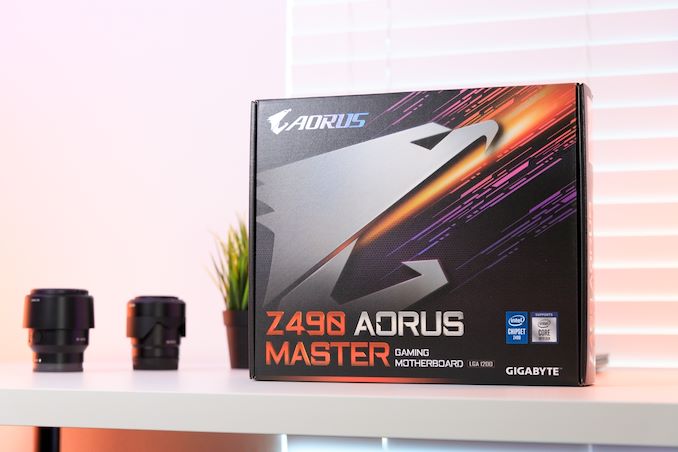
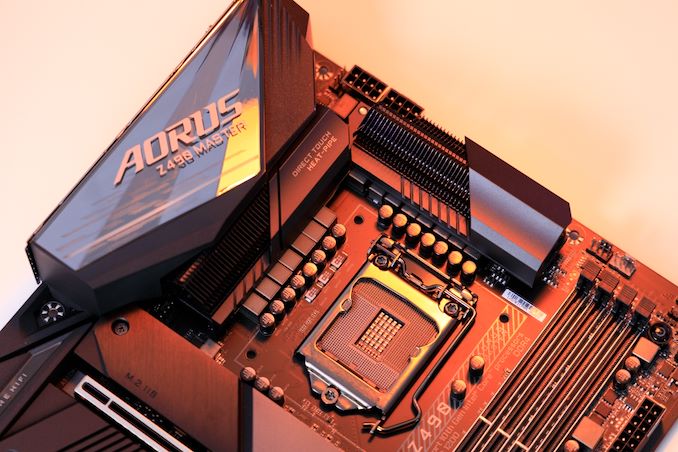
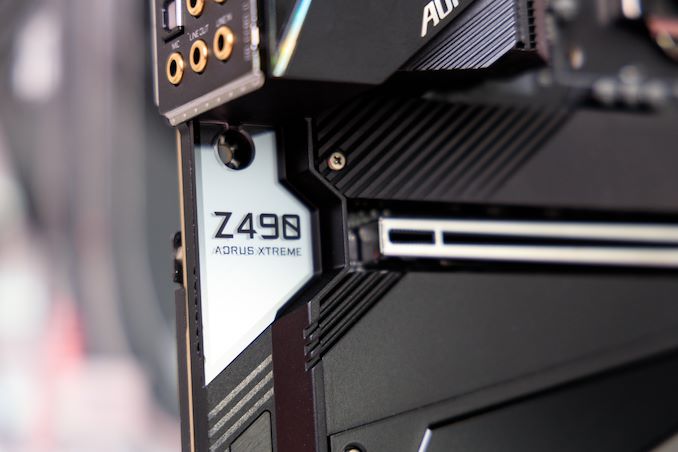
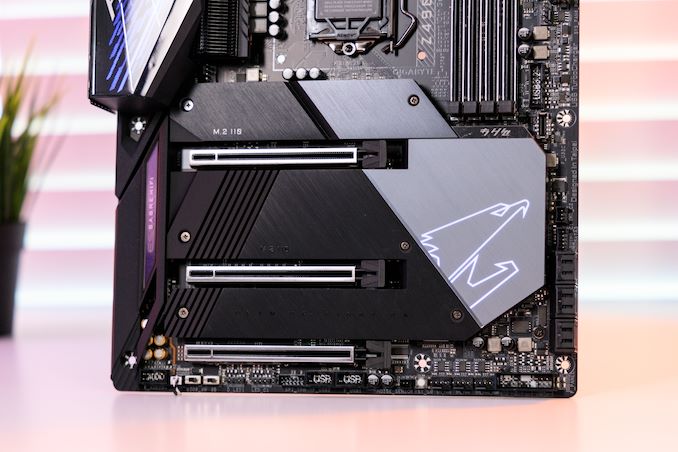
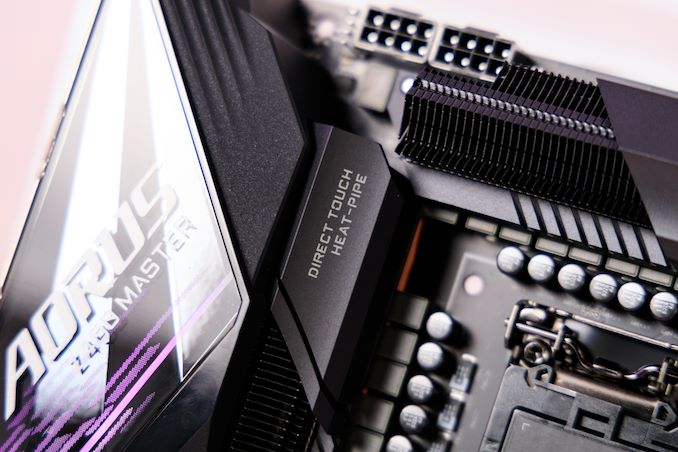

 Quote
Quote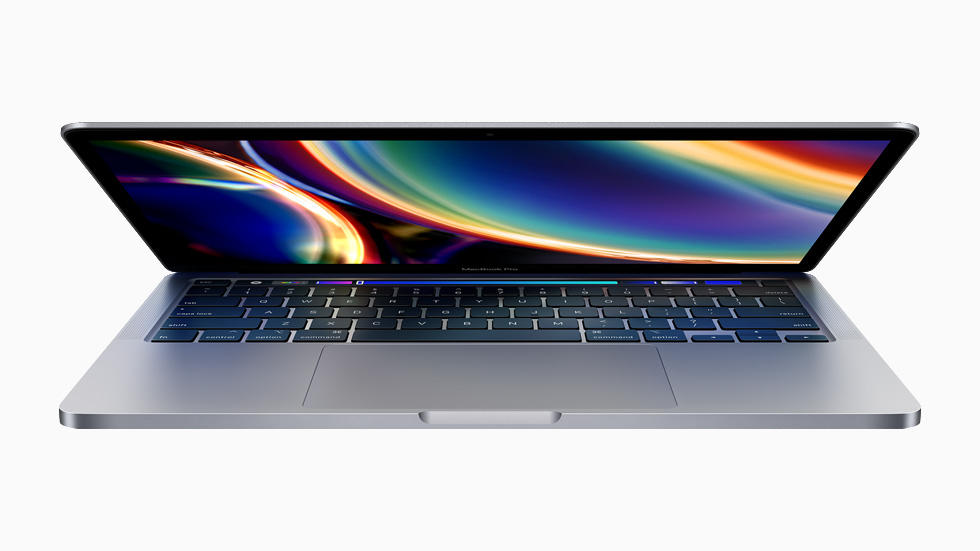
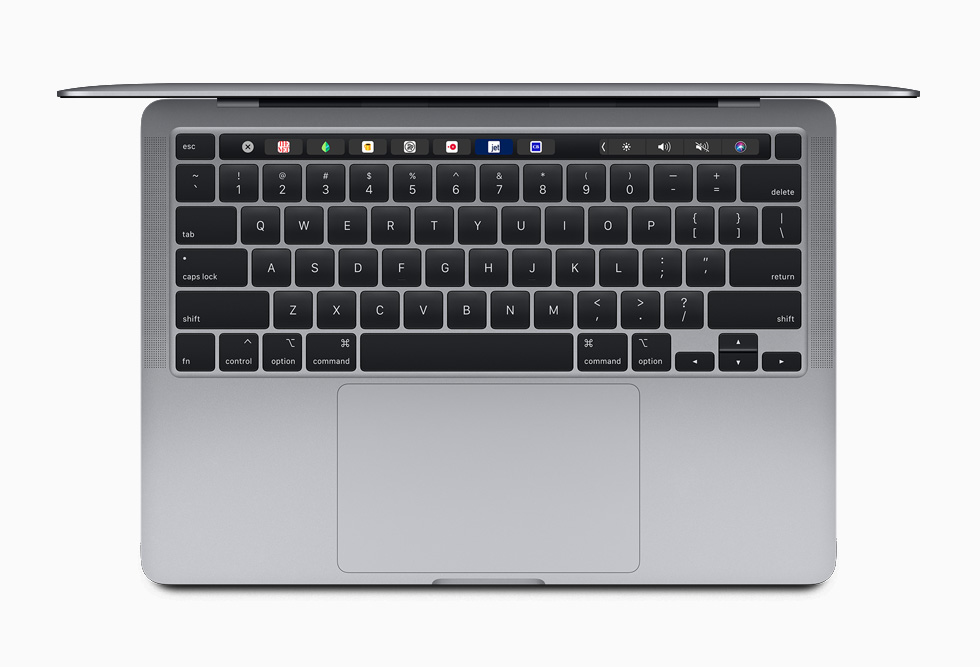
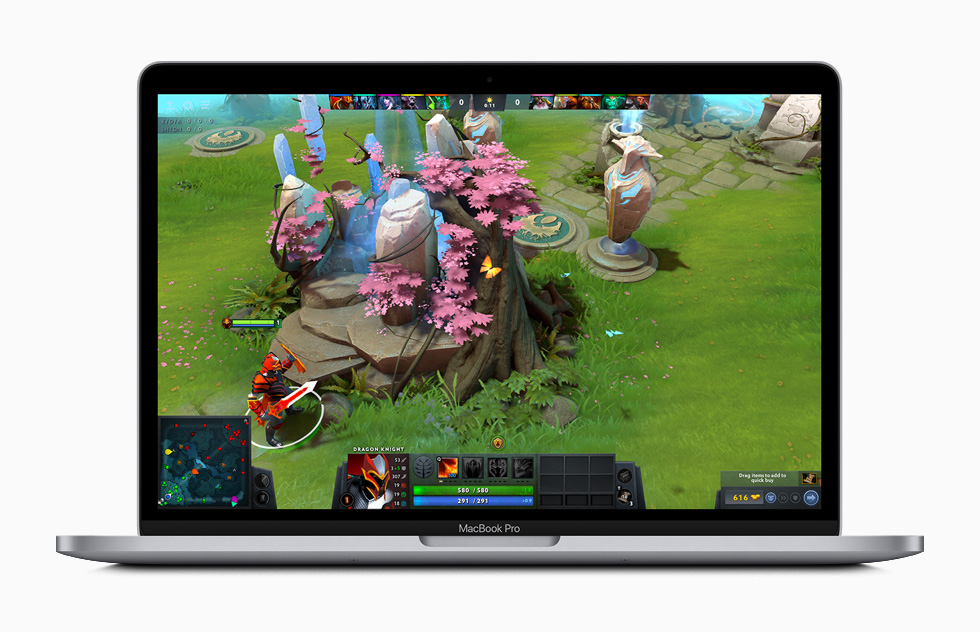
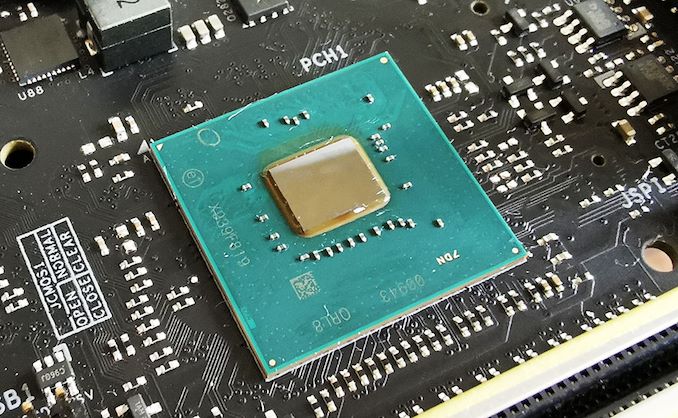

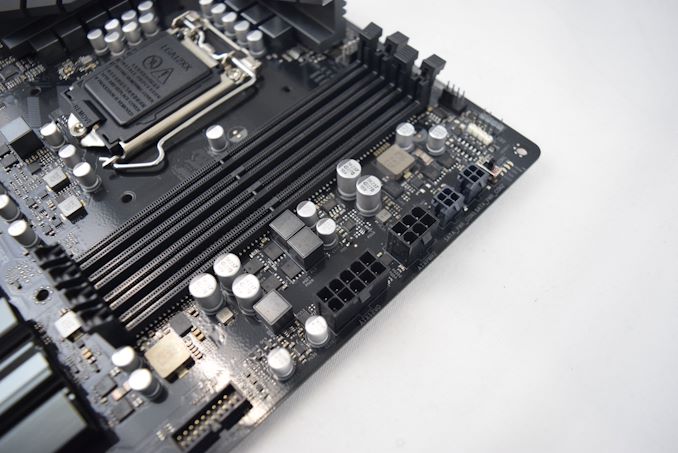
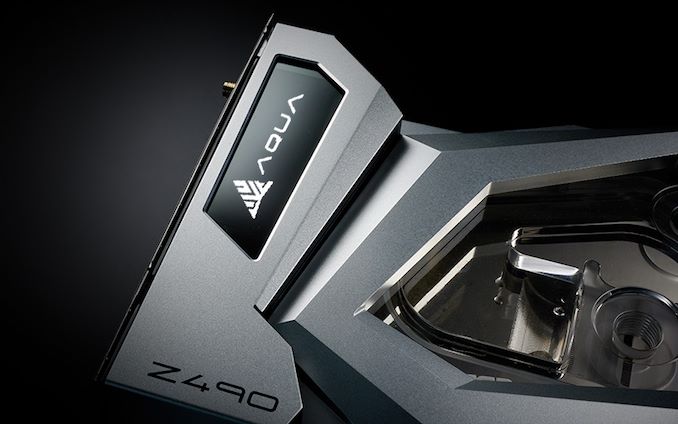
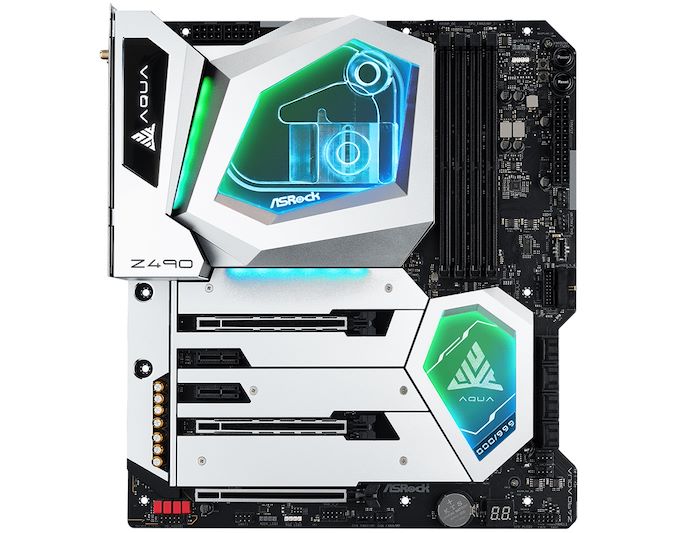
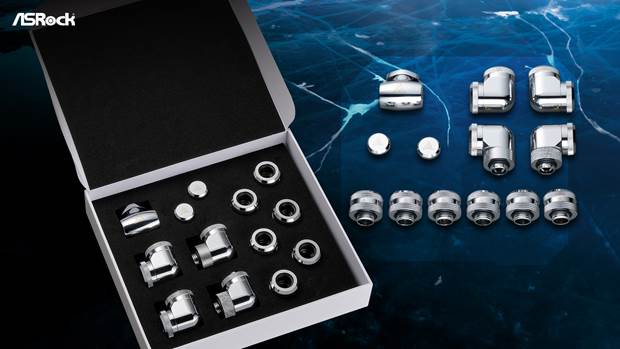

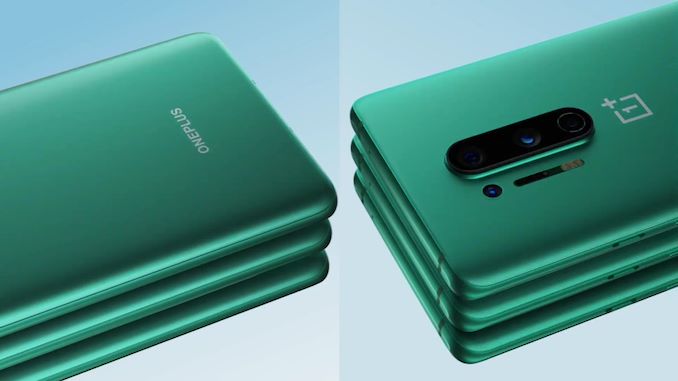
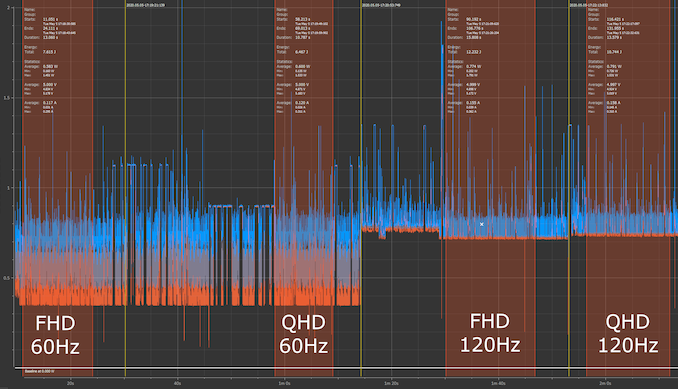
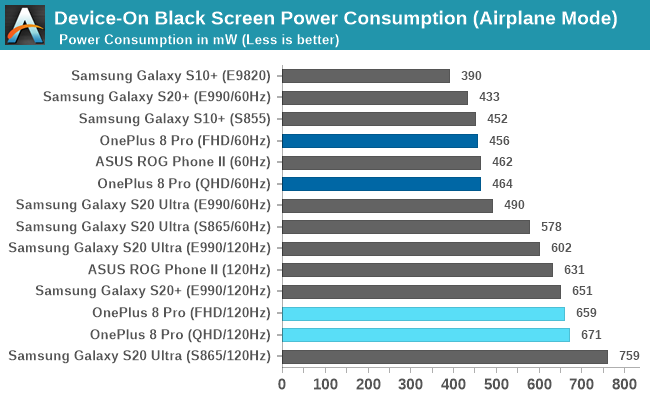
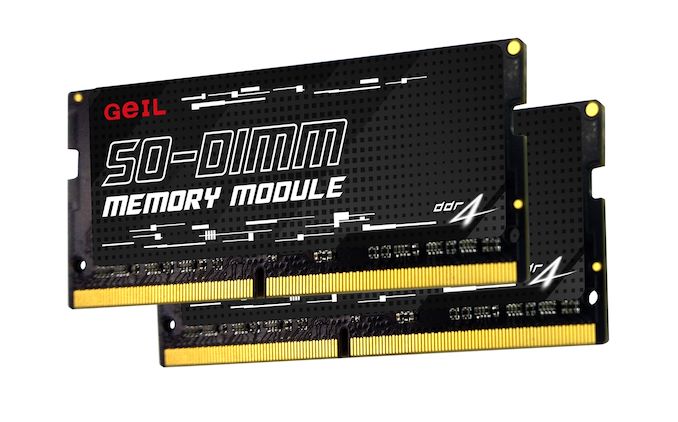
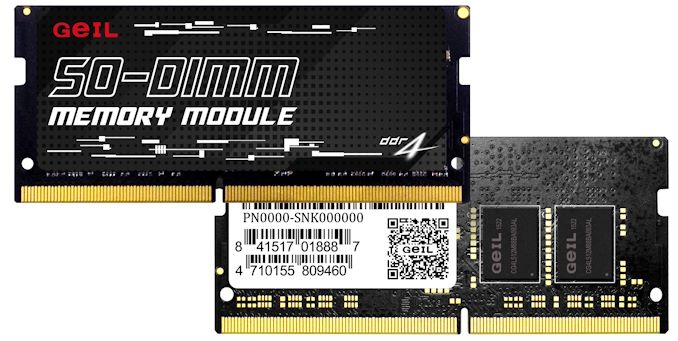
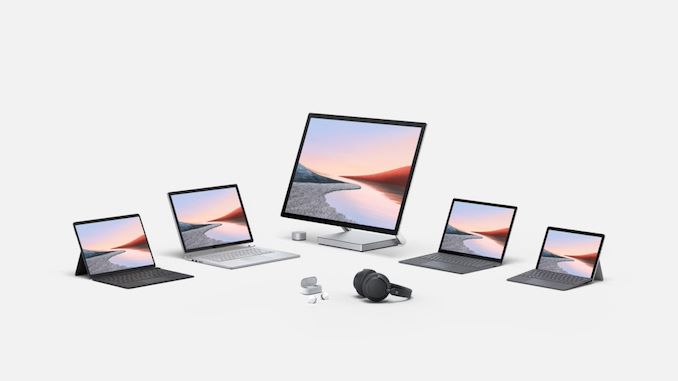
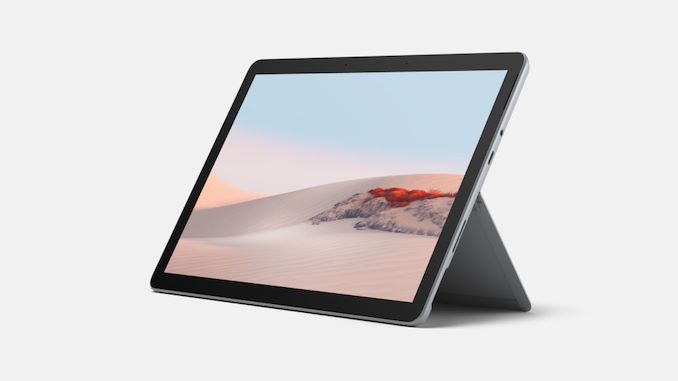

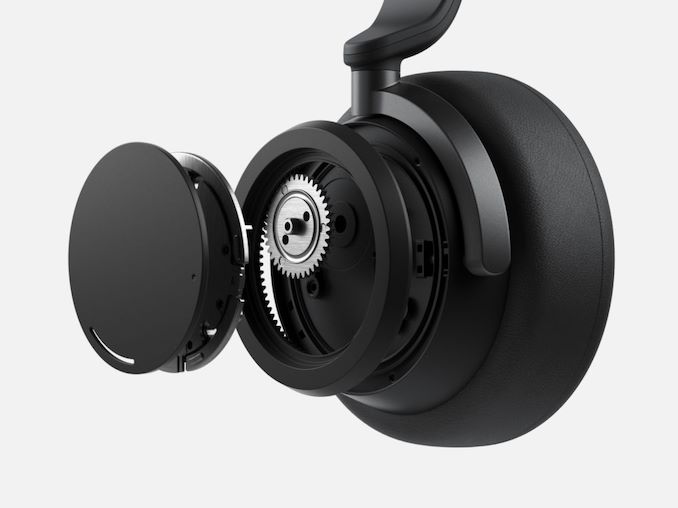

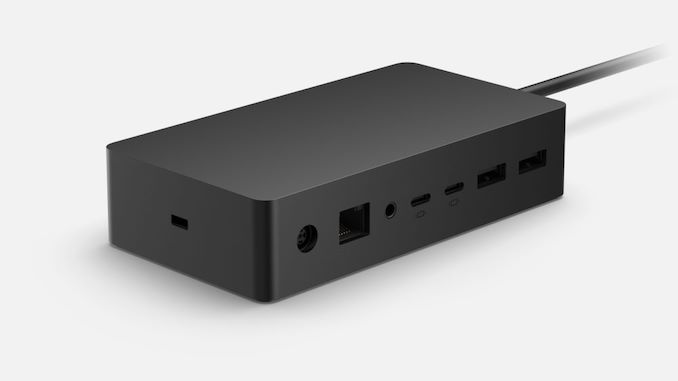
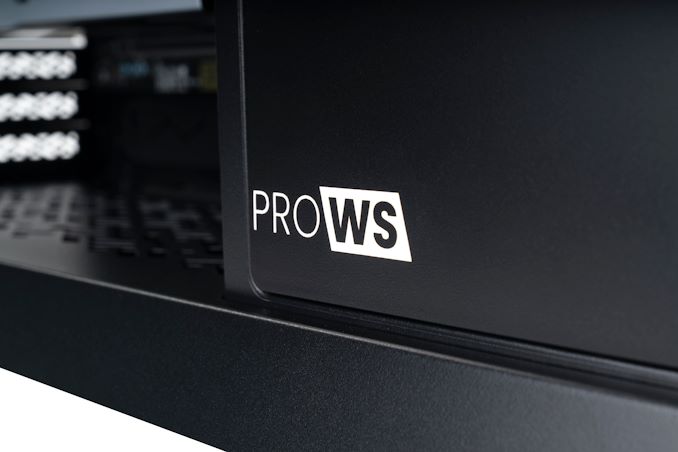
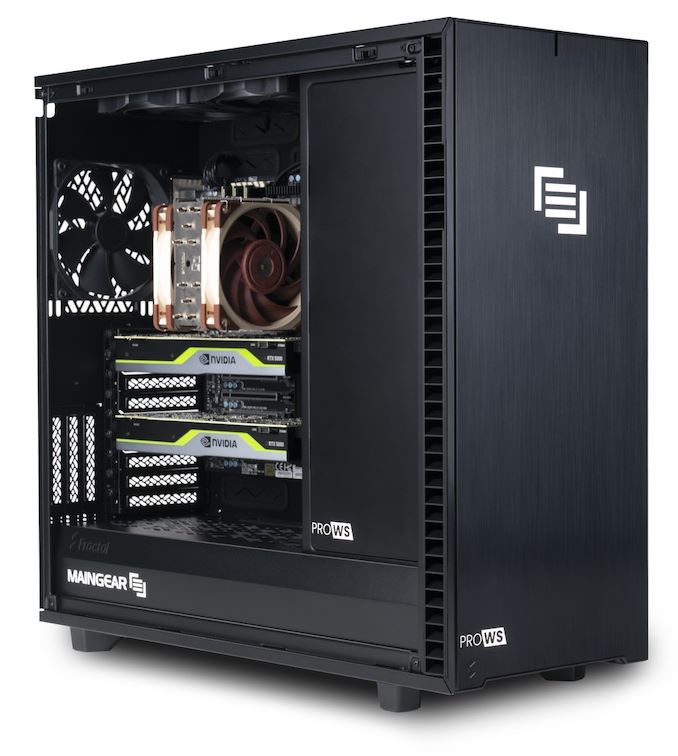
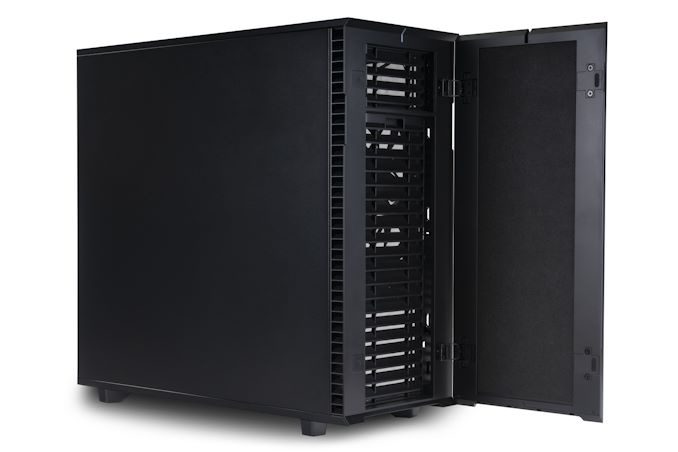

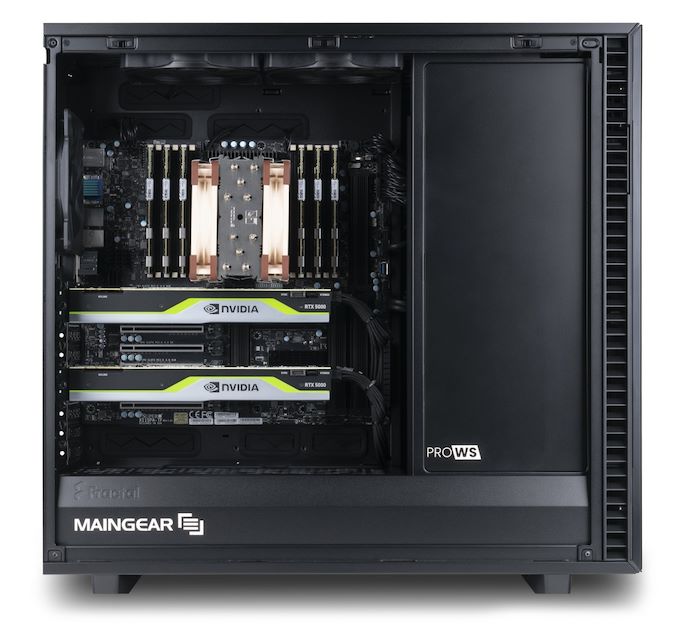
















Bookmarks